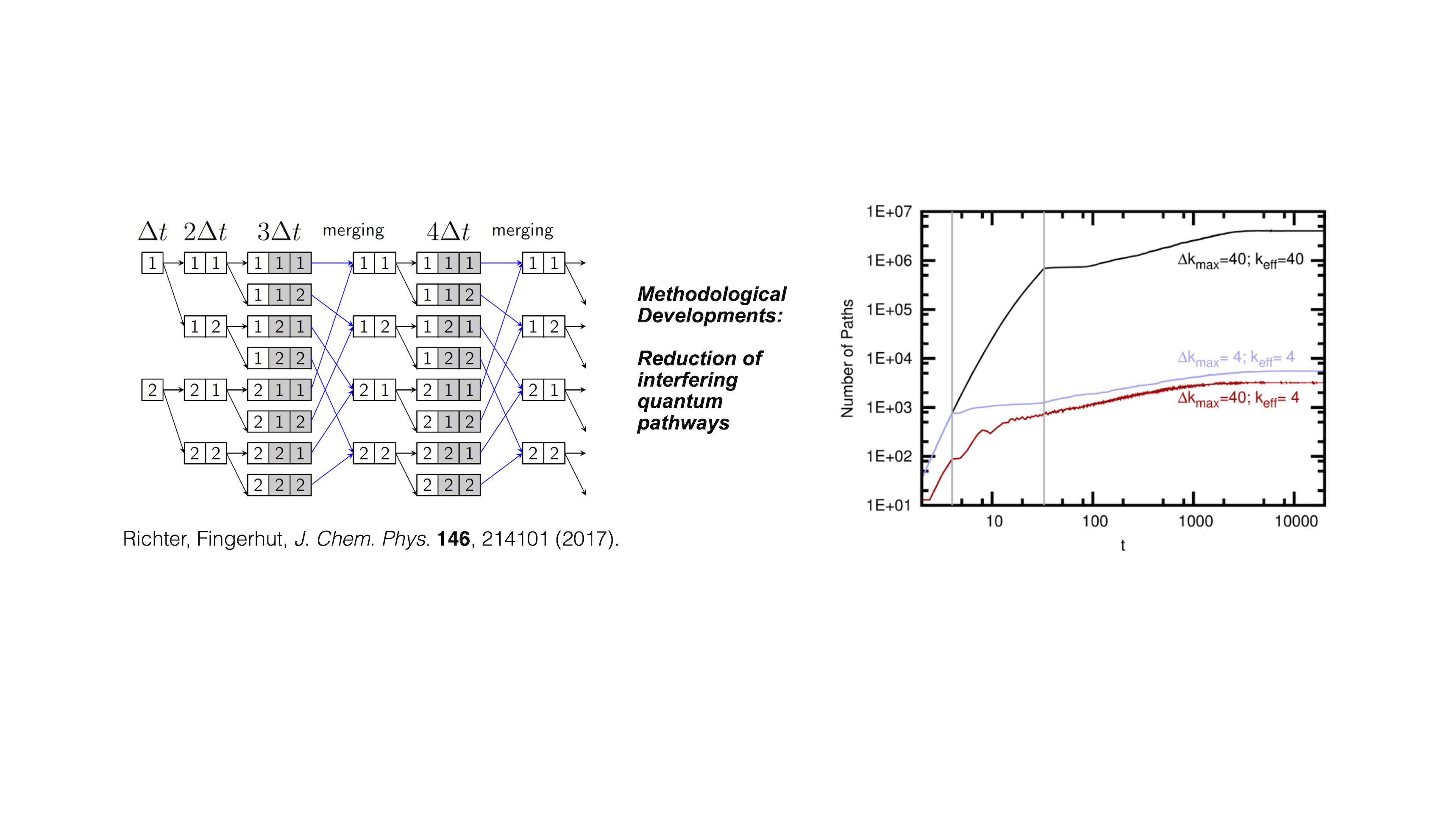Real-time simulations of dissipative quantum dynamics
MACGIC-QUAPI dissipative quantum dynamics:
Systems of biological or technical relevance are often characterized by tremendous complexity, which leads to challenges for ab initio descriptions of the molecular dynamics. A way out is provided via a description in the system-bath formalism. However, situations in which the "slow" and structured protein environment leads to system-bath memory times of considerable length (non-Markovian memory) still pose extreme challenges to the description of such dissipative quantum dynamics.
We have developed a non-perturbative path integration method that allows to describe quantum dynamics subject to the coupling to a thermal bath [1]. The method, called MACGIC-QUAPI, is based on an intermediate coarse-grained representation of the quasi-adiabatic propagator path integral and provides a rigorous treatment of non-Markovian memory effects. The method exploits physical properties of the bath correlation function that allow for a non-equidistant, coarse-grained representation of the Feynman-Vernon influence functional and, thus, a decoupling of the total system bath memory time from the number of considered Feynman paths. The method makes long bath correlation times accessible. Due to the significant numerical speed-up, the method brings larger systems [2] and more complex environments [3] into reach and has great potential for simulations of biophysical processes.
Light-induced energy and charge transfer dynamics:
Starting from ab initio descriptions of molecular Hamiltonians, we aim to describe dissipative quantum dynamics in complex biological environments. Examples are the exciton coupled charge transfer dynamics in a model of teh bacterial reaction centre B. Viridis [2] and the charge transfer dynamics initiated by photoexcitation of the FAD cofactor in the Photolyase / Cryptochrome superfamily [4,5].
Key Publications:
-
Richter M., Fingerhut B.P., "Coarse-grained representation of the quasi adiabatic propagator path integral for the treatment of non-Markovian long-time bath memory." J Chem Phys. 146, 214101 (2017).
-
Richter M., Fingerhut B.P., "Coupled excitation energy and charge transfer dynamics in reaction centre inspired model systems." Faraday Discuss. 216, 72-93 (2019).
-
Acharyya N., Ovcharenko R., Fingerhut B.P., "On the role of non-diagonal system–environment interactions in bridge-mediated electron transfer." J. Chem. Phys. 153, 185101 (2020).
-
M. Richter, Fingerhut B.P., "Regulatory impact of the C-terminal tail on charge transfer pathways in Drosophila Cryptochrome." Molecules Chem. Phys. 25, 4810 (2020).
-
M. Oßwald, B. P. Fingerhut, "Electron Transfer Induced Active Site Structural Relaxation in 64-Photolyase of Drosophila Melanogaster." J. Phys. Chem B 125, 8690-8702 (2021).



